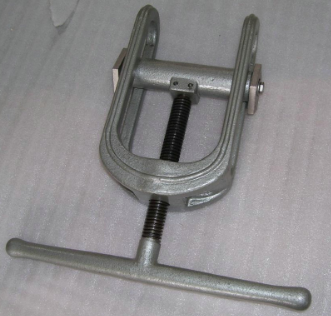Installation of surveillance cameras, one of the important links is the choice of monitoring camera power supply, monitor the power of the choice of the quality of the entire monitoring system project as much as the selection of surveillance cameras. Today we talk about some problems with surveillance camera power:
What should you watch out for when choosing a surveillance camera?
When connecting the camera to the power supply in the centralized power supply scheme, do not connect the remotely located camera and the closely spaced surveillance camera to the same power supply.
If connected to the same power supply, if the power supply voltage is high, the camera at a short distance will be burned, the power supply voltage will be low, and the camera at a relatively long distance will have no image.
The cube camera adopts the wide power supply design, can work stably for a long time in the range of DC input voltage 12V-36V, completely eradicate the harm to the camera caused by unstable input voltage (such as surge, etc.). This problem can be well solved. It is the best solution for centralized power supply to the camera.
If the monitoring distance is too far, you need to configure a higher voltage power supply, such as 30V, 36V, etc., or even directly for 220V AC power, and then change the voltage to the front end.
How to properly configure the camera power supply of the entire monitoring system?
This problem has often made young, inexperienced engineers difficult. Many programs found that the original design of the power supply capacity was not enough and required additional equipment, causing the phenomenon of wrangling with Party A. In fact, because the camera starts at a momentary instant and the starting current is very large, coupled with the loss of long-distance transmission over the project, the power required by the surveillance camera is not simply the sum of the rated power of all cameras.
The correct approach is to add the rated power of the camera of the entire surveillance system by 1.3 times. This is the actual power required by the camera, and then adds about 30% of the loss. Finally, 30% of the margin is added as Expand capacity in the future.
for example:
If a business building has 100 fixed gun cameras and each surveillance camera has a rated power of 4W, how do we configure the camera's power supply?
According to the above calculation method, we calculated that the rated power of the camera is 4W*100 units=400W
The actual power used by the camera is 400W*1.3=520W
After considering the loss, the power required by the camera is 520W*1.3=676W
In addition to the power supply margin, the power required for the final configuration of the camera is 676W*1.3=878W.
Summarized as follows: The power source that the camera needs to configure = The power rating of the camera *1.3*1.3*1.3
(Note: If the monitoring distance is extremely long, it is necessary to increase the power supply and increase the power supply voltage.)
Surveillance camera power configuration, the most taboo?
The most taboo is: The entire monitoring system shares a power supply. The reason is as follows:
When the system is being repaired, it is often necessary to turn the power on and off. All cameras start at the same time when the power is turned on. The start-up current is particularly large, and the impact on the power supply is great. The power will be severely burned.
All surveillance cameras share a single power supply. When the power supply fails, the entire closed-circuit monitoring system is paralysed. In particular, the images of some important entrances and exits cannot be monitored and may cause unnecessary trouble.
So what should be the correct approach? As the above example, a business building has 100 fixed cameras, a total of about 800W of power, the correct configuration should be to select 4 sets, each 200W power supply.
In this way, when a certain power supply fails, the cameras at the important entrances and exits can be connected to other good power supplies so as not to affect the work of the entire system.
Material specification:
1. carbon & low alloy steel;
2. stainless steel;
3. high alloy & wear resist steel;
4. gray iron; ductile iron;
5. malleable iron;
6. alloyed cast iron;
7. aluminum alloy;
8. cooper alloy;
9. zinc alloy
Range of casting weight: 0.50kg-450kg
Heat Treatment: Normalizing
Quenching
Tempering
OUR MACHINING PROCESS :
lOccupies an area more than 6,000 square meters
lMore than 40pcs big CNC lathes Ø500 - Ø1200
lMachining center 1400 x 825 x 1000mm 4 axis
Can provide services: turning; milling; grinding; drilling; inserting; broaching; boring; polishing
Surface preparation: passivation; polishing; plating; coating; painting; zinc phosphate; dacrotized / dacromet technology
Our inspection equipments: Spectrometer Analyzer; Magnetic Particle Inspection; Brinell Hardness; Ultrasonic Inspection; Liquid Penetrate Inspection, Low Temperature Impact Tester; Universal Tester, Hydraulic Pressure Tester, CMM and etc.

Investment Casting
Precision Casting,Lost Wax Casting,Stainless Steel Turning Parts,Customized Turning Parts
Baoding Henglian Mechanical Co.,Ltd , https://www.hengliancasting.com

![<?echo $_SERVER['SERVER_NAME'];?>](/template/twentyseventeen/skin/images/header.jpg)